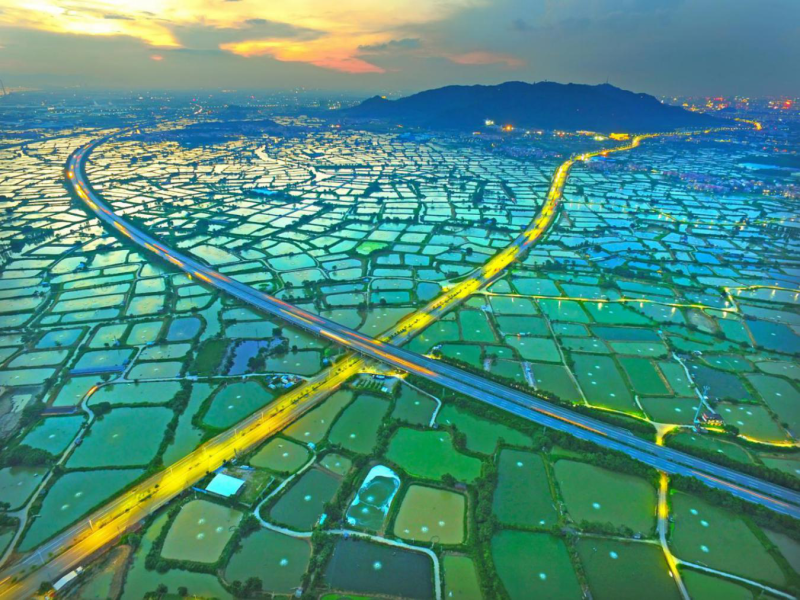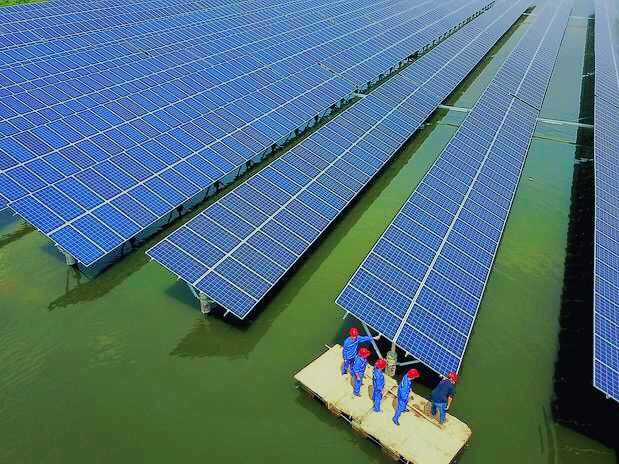Ou Ning
Mulberry Fish Pond
The Mulberry Fish Pond has become a legend in today's Pearl River Delta region, and its model of mutualism and ecological cycle exists only in the writings of agricultural history. With the rising demand for fish in the food market, more and more villagers have given up their ponds to focus on fish farming, abandoning the cultivation of mulberry, cane, and banana on the pond dikes.
The traditional Mulberry Fish Pond precedes today's popular "permaculture" theory: the land is dug to form a pond for storing water; the dug-out mud can then be used for building the pond dikes; mulberry, cane and banana can be planted on the pond dikes; mulberry leaves can feed silkworms, bagasse from sugar cane can feed pigs, and the excrement from silkworms and pigs can feed fish; and fish excrement is turned into humus pond mud. Every year, after the pond dries, the mud is dug up again to improve the fertility of the pond dikes. This kind of cyclical ecosystem relies on sunlight and rain to provide energy and nutrients, turning the waste of one species into nutrients for another species, thus forming a complementary, multi-species ecosystem that operates organically. In the era of the small-scale farm economy, with scarce land and abundant population, it took an ingenious design to make the best use of the land and maximize the yield per unit area. This system is regarded as the essence of Chinese intensive agriculture, along with methods such as raising ducks and fish in rice fields and mixed-farming different crops on the same land.
After the switch to monoculture fish farming, the ponds were equipped with oxygen boosting pumps to address a lack of oxygen due to an oversupply of young fish, and the pumps had to be powered by electricity, thus turning fish farming into an energy-consuming industry. Originally intended to preserve the ancient agricultural heritage of the Mulberry Fish Pond, agricultural experts invented the "photovoltaic fish pond" in case where the villagers cannot be forced to restore the dike planting against the market demand. That is, installing solar reflectors on the fish pond on the one hand collects solar energy to power the oxygenation pump and water pumping machines (the excess electricity collected for the power grid); On the other hand, it can also shade the pond, cool the temperature, improve the fish's appetite, and reduce the algae breeding on the water surface, which kills many birds with one stone. It can be narrowly considered as inheriting the ecological wisdom of the Mulberry Fish Pond. Like other contemporary “smart” agriculture models, the photovoltaic fish ponds can be equipped with sensors and cameras connected to cell phones or desktop computers through a platform to monitor water temperature, oxygen levels, and fish growth, creating more leisure time for villagers.
The only problem with such a solution is that it would sacrifice the idyllic scenery. After all, the dense solar reflectors only remind people of industrialization. In this case, another option has been accepted, which is to turn the ponds into "water villages" and operate them with an agro-tourism mindset. This is what we may face today in transforming the rural landscape of the Pearl River Delta and the changes in its production and consumption patterns.
(Translated by Fiona He)

The old mulberry fish ponds remain in the south of Mount Xiqiao(西樵山), Nanhai(南海), Foshan(佛山), Guangdong Province.

The old mulberry fish ponds remain in Gulao Town(古劳镇), Heshan County(鹤山县), Jiangmen City(江门市), Guangdong Province today.

The photovoltaic fish pond in Dawan Town(大湾镇), Gaoyao County(高要县), Zhaoqing City(肇庆市), Guangdong Province.